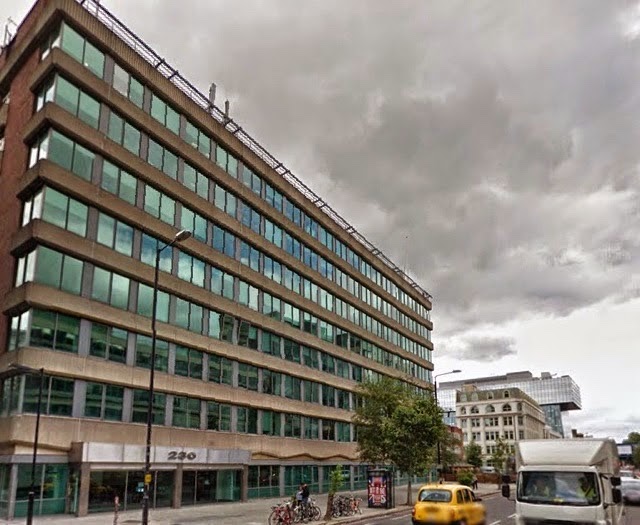Commentary By Zack Kanter@zackkanter, Entrepreneur and Futurist
I have spent quite a bit of time lately thinking about autonomous cars, and I wanted to summarize my current thoughts and predictions. Most people – experts included – seem to think that the transition to driverless vehicles will come slowly over the coming few decades, and that large hurdles exist for widespread adoption. I believe that this is significant underestimation. Autonomous cars will be commonplace by 2025 and have a near monopoly by 2030, and the sweeping change they bring will eclipse every other innovation our society has experienced.
They will cause unprecedented job loss and a fundamental restructuring of our economy, solve large portions of our environmental problems, prevent tens of thousands of deaths per year, save millions of hours with increased productivity, and create entire new industries that we cannot even imagine from our current vantage point.
The transition is already beginning to happen. Elon Musk, Tesla Motor’s CEO, says that their 2015 models will be able to self-drive 90 percent of the time.1 And the major automakers aren’t far behind – according to Bloomberg News, GM’s 2017 models will feature “technology that takes control of steering, acceleration and braking at highway speeds of 70 miles per hour or in stop-and-go congested traffic.”2 Both Google3 and Tesla4 predict that fully-autonomous cars – what Musk describes as “true autonomous driving where you could literally get in the car, go to sleep and wake up at your destination” – will be available to the public by 2020.
HOW IT WILL UNFOLD
Industry experts think that consumers will be slow to purchase autonomous cars – while this may be true, it is a mistake to assume that this will impede the transition. Morgan Stanley’s research shows that cars are driven just 4% of the time,5 which is an astonishing waste considering that the average cost of car ownership is nearly $9,000 per year.6 Next to a house, an automobile is the second most expensive asset that most people will ever buy – it is no surprise that ride sharing services like Uber and car sharing services like Zipcar are quickly gaining popularity as an alternative to car ownership. It is now more economical to use a ride sharing service if you live in a city and drive less than 10,000 miles per year.7 The impact on private car ownership is enormous: a UC-Berkeley study showed that vehicle ownership among car sharing users was cut in half.8 The car purchasers of the future will not be you and me – cars will be purchased and operated by ride sharing and car sharing companies.
LISTEN TO THE KCBS INTERVIEW:
And current research confirms that we would be eager to use autonomous cars if they were available. A full 60% of US adults surveyed stated that they would ride in an autonomous car9 , and nearly 32% said they would not continue to drive once an autonomous car was available instead.10 But no one is more excited than Uber – drivers take home at least 75% of every fare.11 It came as no surprise when CEO Travis Kalanick recently stated that Uber will eventually replace all of its drivers with self-driving cars.12UPDATE: Uber Hires Carnegie Melon Robotic Team To Develop Cars
A Columbia University study suggested that with a fleet of just 9,000 autonomous cars, Uber could replace every taxi cab in New York City13 – passengers would wait an average of 36 seconds for a ride that costs about $0.50 per mile.14 Such convenience and low cost will make car ownership inconceivable, and autonomous, on-demand taxis – the ‘transportation cloud’ – will quickly become dominant form of transportation – displacing far more than just car ownership, it will take the majority of users away from public transportation as well. With their $41 billion valuation,15 replacing all 171,000 taxis16 in the United States is well within the realm of feasibility – at a cost of $25,000 per car, the rollout would cost a mere $4.3 billion.
FALLOUT
The effects of the autonomous car movement will be staggering. PricewaterhouseCoopers predicts that the number of vehicles on the road will be reduced by 99%, estimating that the fleet will fall from 245 million to just 2.4 million vehicles.17
Disruptive innovation does not take kindly to entrenched competitors – like Blockbuster, Barnes and Noble, Polaroid, and dozens more like them, it is unlikely that major automakers like General Motors, Ford, and Toyota will survive the leap. They are geared to produce millions of cars in dozens of different varieties to cater to individual taste and have far too much overhead to sustain such a dramatic decrease in sales. I think that most will be bankrupt by 2030, while startup automakers like Tesla will thrive on a smaller number of fleet sales to operators like Uber by offering standardized models with fewer options.
Ancillary industries such as the $198 billion automobile insurance market,18 $98 billion automotive finance market,19 $100 billion parking industry,20 and the $300 billion automotive aftermarket21 will collapse as demand for their services evaporates. We will see the obsolescence of rental car companies, public transportation systems, and, good riddance, parking and speeding tickets. But we will see the transformation of far more than just consumer transportation: self-driving semis, buses, earth movers, and delivery trucks will obviate the need for professional drivers and the support industries that surround them.
The Bureau of Labor Statistics lists that 884,000 people are employed in motor vehicles and parts manufacturing, and an additional 3.02 million in the dealer and maintenance network.22 Truck, bus, delivery, and taxi drivers account for nearly 6 million professional driving jobs. Virtually all of these 10 million jobs will be eliminated within 10-15 years, and this list is by no means exhaustive.
But despite the job loss and wholesale destruction of industries, eliminating the needs for car ownership will yield over $1 trillion in additional disposable income – and that is going to usher in an era of unprecedented efficiency, innovation, and job creation.
A VIEW OF THE FUTURE
Morgan Stanley estimates that a 90% reduction in crashes would save nearly 30,000 lives and prevent 2.12 million injuries annually.23 Driverless cars do not need to park – vehicles cruising the street looking for parking spots account for an astounding 30% of city traffic,24 not to mention that eliminating curbside parking adds two extra lanes of capacity to many city streets. Traffic will become nonexistent, saving each US commuter 38 hours every year – nearly a full work week.25 As parking lots and garages, car dealerships, and bus stations become obsolete, tens of millions of square feet of available prime real estate will spur explosive metropolitan development.
The environmental impact of autonomous cars has the potential to reverse the trend of global warming and drastically reduce our dependence on fossil fuels. Passenger cars, SUVs, pickup trucks, and minivans account for 17.6% of greenhouse gas emissions26 – a 90% reduction of vehicles in operation would reduce our overall emissions by 15.9%. As most autonomous cars are likely to be electric, we would virtually eliminate the 134 billion of gasoline used each year in the US alone.27 And while recycling 242 million vehicles will certainly require substantial resources, the surplus of raw materials will decrease the need for mining.
But perhaps most exciting for me are the coming inventions, discoveries, and creation of entire new industries that we cannot yet imagine.
I dream of the transportation cloud: near-instantly available, point-to-point travel. Ambulances that arrive to the scene within seconds. A vehicle-to-grid distributed power system. A merging of city and suburb as commuting becomes fast and painless. Dramatically improved mobility for the disabled. On-demand rental of nearly anything you can imagine. The end of the DMV!
It is exciting to be alive, isn’t it?















Recent Comments